Summer is favorite among most gardeners as it delivers a splash of colors and textures to your garden and attracts hummingbirds, bees, and butterflies.
You can add a variety of plants to your garden, from sun-loving to shade-loving plants.
The life of the plant may vary with your location, but you can never be disheartened as there are so many options to choose from.
In this article, we have shared the 15 best flowers for summer and their care routine.
Allium
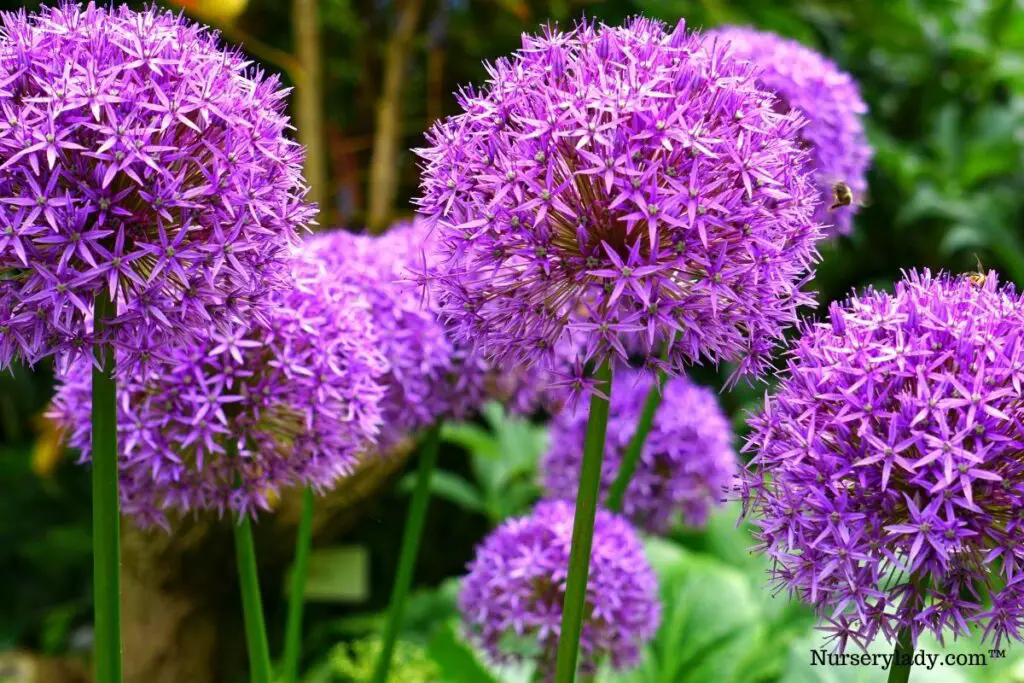
Allium produces round flower heads with dozens of tiny flowers. They are known to be very hardy plants, growing in almost all conditions. They have blue-green foliage complementing their blooms. They come in different varieties with different shapes and forms.
Light: Alliums to grow healthy and abundant blooms need full sun most of the days. They can grow in partial shade too but for better blossoming, provide them as much sunshine as you can.
Watering: Water Alliums when the soil is halfway dry. Simply dog your finger in the soil from the top to check if the soil feels dry. They can withstand dry spells but watering when the soil is dry is best.
Fertilizer: Alliums are light feeders and can thrive without feeding if the soil is rich. If the soil is poor, feed with a balanced fertilizer to replenish its soil and encourage blooming.
General care: Alliums are both cold hardy and heat hardy. Some protection from harsh cold and hot winds will be enough to pass the season.
Angelonia
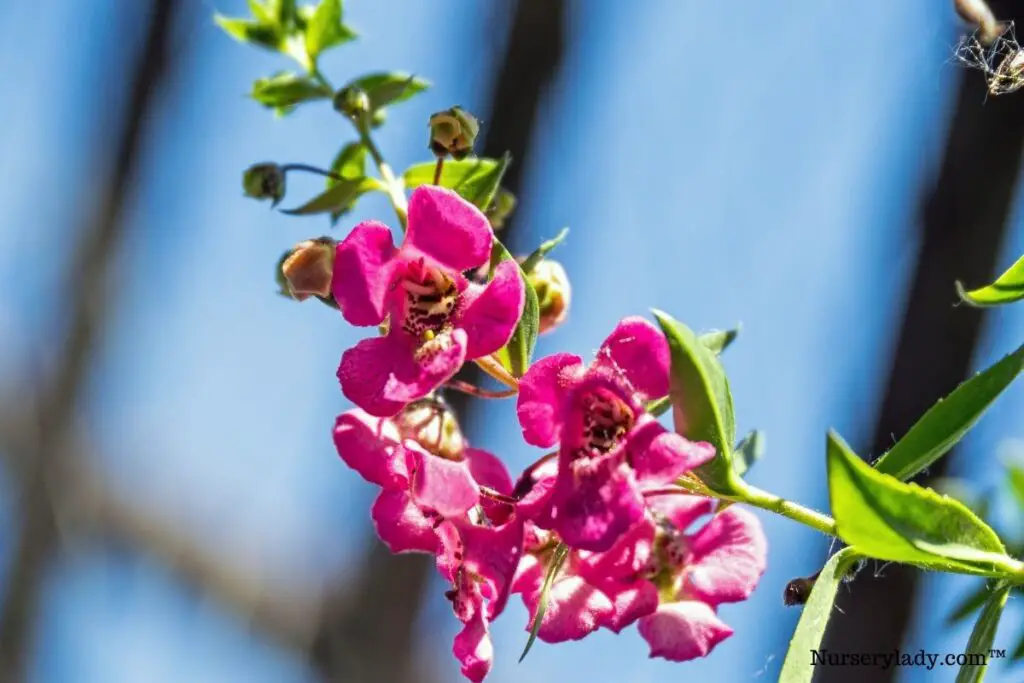
Angelonia produces flowers with a grape scent. They draw hummingbirds, bees, butterflies’ attention. They require little attention and add color to your garden in the summer heat.
Light: Angelonia needs full sun full day to have the energy to bloom abundantly. They can grow in partial shade too, but flowers will reduce. Low light can also lead to leggy plants.
Watering: Angelonia can withstand long periods of blooms. Water them when the soil is halfway dry and ensure proper drainage. Proper watering will encourage better blooming and avoid sogginess.
Fertilizer: Feed Angelonia monthly with balanced flower fertilizer in the growing season. Also, feeding will reduce flowering. Dilute the fertilizer to half the labeled strength.
General care: Angelonia appreciates hot and humid weather. Deadheading is not necessary to encourage blooming. Though cutting back plants will encourage bushy plants.
Black-eyed Susan
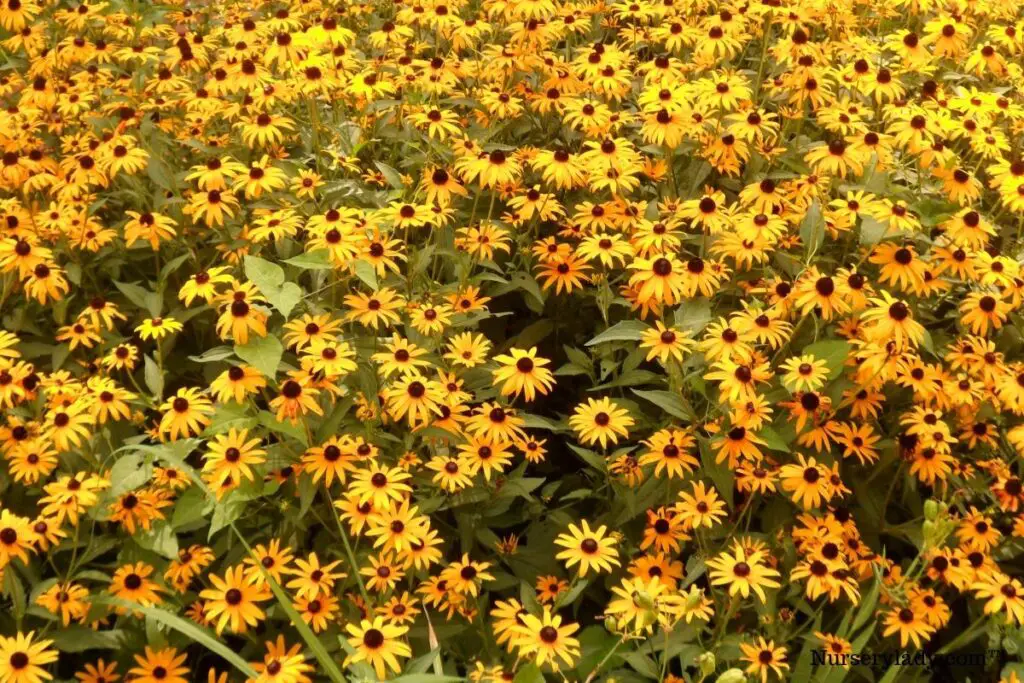
Black-eyed Susan has cheerful yellow blooms with a dark center and has hairy foliage. They take around 3 years to reach their full height, i.e.3 feet. They are low maintenance and bloom in summer.
Light: To grow healthy and strong black-eyed Susan, keep them in full sun as it will improve the quality and quantity of the blooms. Partial shade is also fine but may reduce flowering.
Watering: Water black-eyed Susan properly in their first season to help them establish roots. They are drought tolerant once matured, and watering when the soil is dry will keep them happy.
Fertilizer: Fertilize black-eyed Susan with compost and nothing more than that. Feeding with fertilizer will make them weak and inhibit flowering.
General care: Black-eyed Susan prefers warm temperatures of around 60°F or above. They are drought tolerant and can thrive in humid conditions easily.
Coneflowers
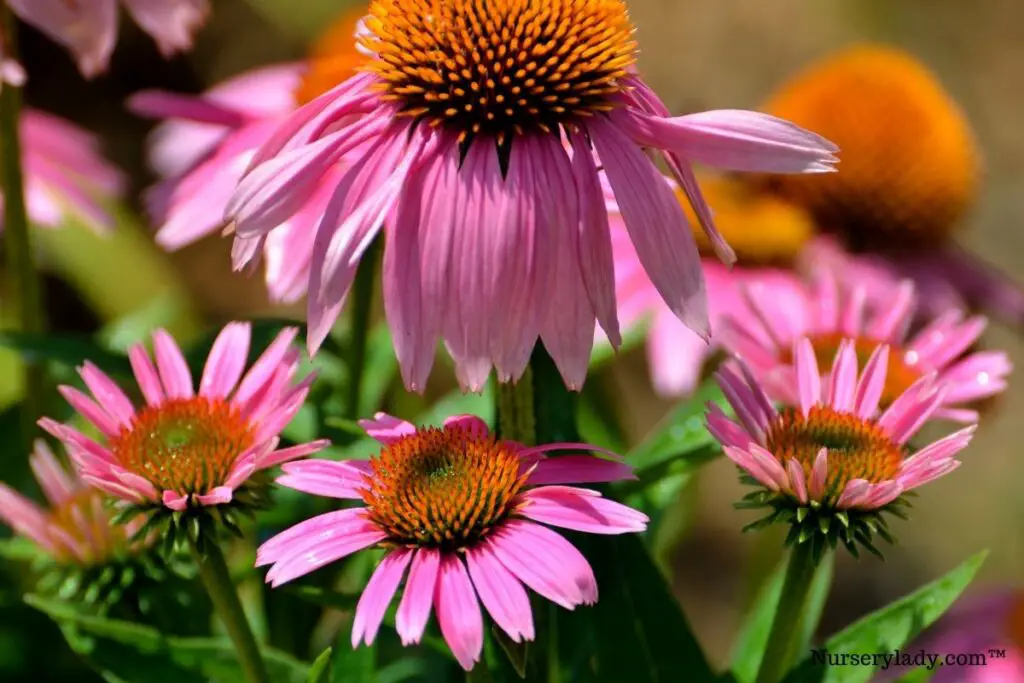
Coneflowers produce small blooms that attract hummingbirds, birds. They grow at a moderate speed and can take around 2 years to produce blooms.
Light: Coneflowers appreciate full sun and will grow best blooms if provided with 6-8 hours of sun on most days. They can stay well in partial shade too, but blooms will not be up to the mark, and the plant will be floppy.
Water: Coneflowers do well when frequently watered but are also drought tolerant. Young plants need frequent watering, and matured ones need to be drought tolerant. Water only when the soil is halfway dry to avoid wet soil.
Fertilizer: Coneflowers perform best in organically rich soil, so adding compost is advised. Feeding with fertilizer will only make the plant leggy and inhibit flowering.
General care: Coneflowers prefer hot and dry weather. They are hardy and can tolerate a variety of conditions along with temperature fluctuations. They do not like high humidity and may suffer in wet areas.
Looking for gardening supplies? We have tested 100's of products before recommending them to you guys. Check out our best pick below:
| Image | Gardening Supplies | Best Price? |
|---|---|---|
 Top
Top Top
Top | Raised Garden Bed Kit | Check On Amazon |
 | XLUX Soil Moisture Meter, Plant Water Monitor, Soil Hygrometer Sensor for Gardening, Farming, Indoor and Outdoor Plants, No Batteries Required | No Results |
 Top
Top Top
Top | 82 Pcs Garden Tools Set and Extra Succulent Tools Set | Check On Amazon |
 | Joeys Garden Expandable Garden Hose with 8 Function Hose Nozzle, Lightweight Anti-Kink Flexible Garden Hoses, Extra Strength Fabric with Double Latex Core, (50 FT, Black) | No Results |
 Top
Top Top
Top | Dual Chamber Compost Tumbler | Check On Amazon |
 Top
Top Top
Top | Sunnyglade Plant Stakes | Check On Amazon |
 Top
Top Top
Top | Organic Cold Pressed Neem Seed Oil | Check On Amazon |
 Top
Top Top
Top | Mighty Mint Gallon :-Insect and Pest Control Peppermint Oil | Check On Amazon |
 Top
Top Top
Top | Scotts DiseaseEx Lawn Fungicide | Check On Amazon |
 Top
Top Top
Top | Jacks Classic 20-20-20 All Purpose Fertilizer | Check On Amazon |
 Top
Top Top
Top | 30,000 Seeds Pollinator Attracting Wildflower Mixture | Check On Amazon |
 Top
Top Top
Top | Survival Vegetable Seeds Garden Kit-Over 16,000 Seeds | Check On Amazon |
Bougainville
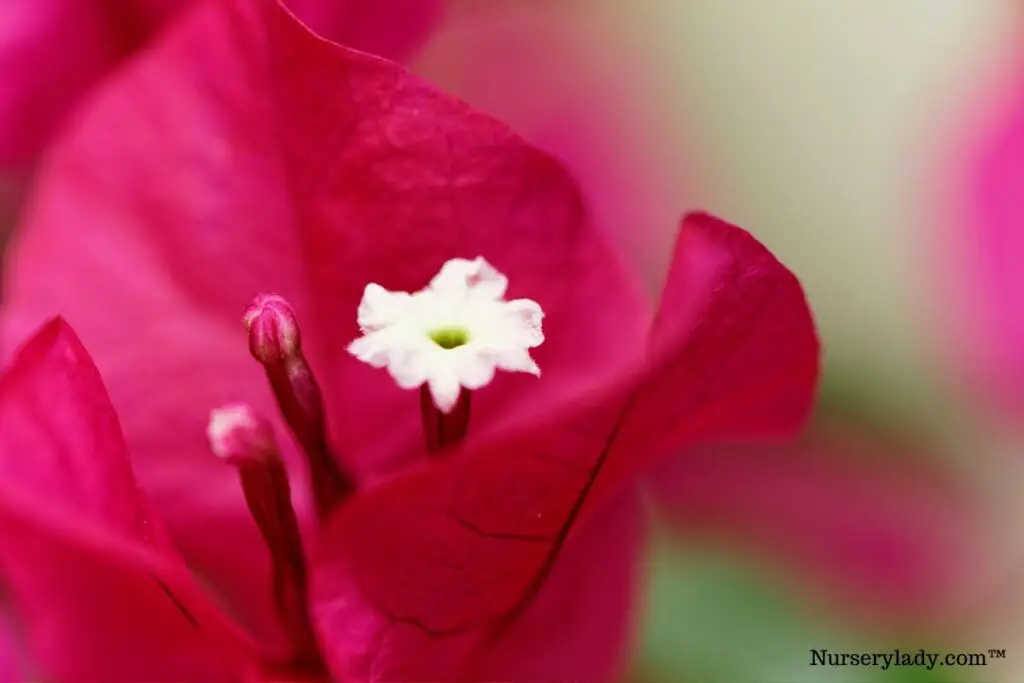
Bougainville has bracts that hide its tiny blooms and is known for its beautiful foliage. They are easy growing and bloom three times a year.
Light: Bougainville is sun lovers and performs best in full-day sun exposure. Choose a sunny spot and rotate the plant every few days so that all parts receive enough light.
Watering: Water Bougainville thoroughly during warm months and with little to no water in winter. Water deeply and allow the excess water to drain out. Water next when the soil is dry.
Fertilizer: Feed Bougainville with diluted fertilizer monthly in the growing season. Feeding will encourage blooming and lead to bushier plants. Use a fertilizer formulated for Bougainville or tropical plants.
General care: Bougainville is a sturdy plant and can survive in temperature levels of 80°F and above and lower at 40°F. The thriving temperature level for them is between 60°F to 70°F.
Sweet autumn clematis
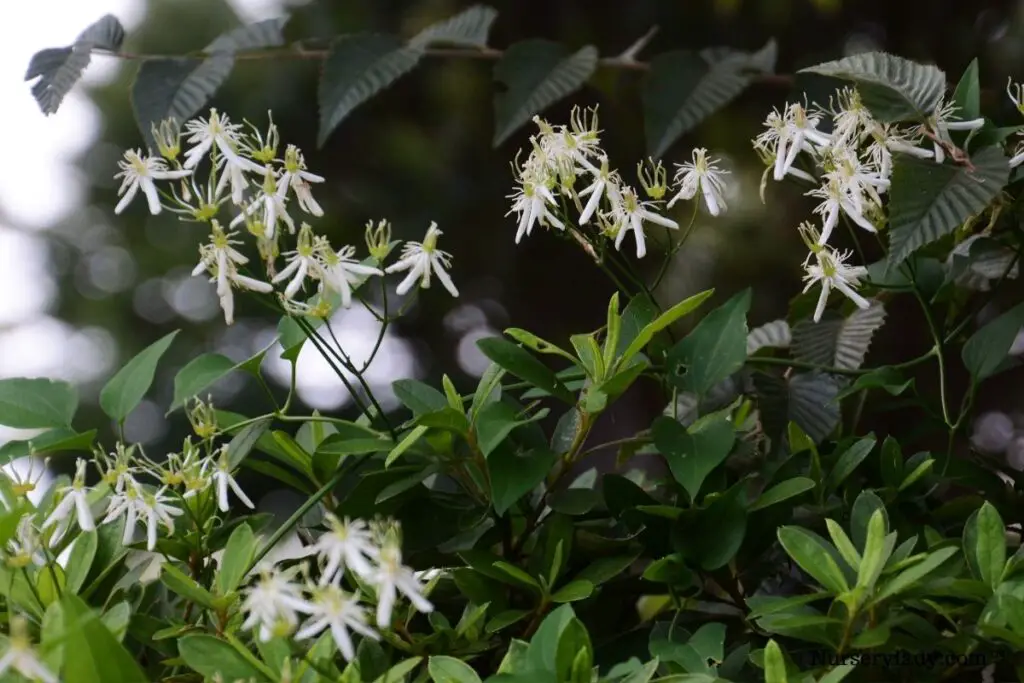
Sweet autumn clematis produces white fragrant blooms appearing like fleece. They are invasive in many parts of the world and also toxic to pets and humans. They are fast-growing and bloom in summer and early fall.
Light: Sweet autumn clematis prefers full sun to flower and grows well. They can grow in some shade too, but you have to compromise with the number of blooms.
Watering: Sweet autumn clematis does not like to sit in water, and they appreciate watering when the soil is relatively dry. Check the drainage system to avoid overwatering.
Fertilizer: Sweet autumn clematis is a heavy feeder and will benefit from fertilizing in spring. Feed with low nitrogen fertilizer throughout the growing months by adulterating it.
General care: Sweet autumn clematis can tolerate a wide range of temperatures and can do well in all humidity levels. Prune them after blooming is finished.
Cosmos
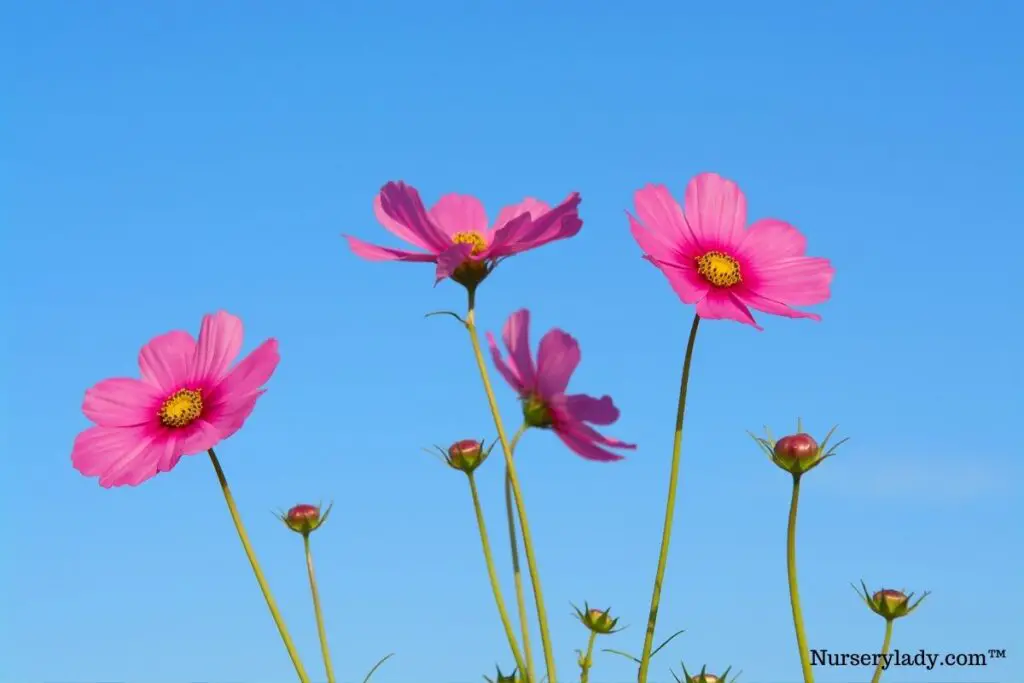
Cosmos produce attractive flowers that bloom throughout the summer in many colors. They can grow up to 6 feet high and 3 feet high, and they grow amazingly in grounds, pots and are low-maintenance.
Light: keep Cosmos in a spot where they can receive full sun for as long hours as you can. They can withstand full sun in the hottest summer, and with low light, there will be fewer blooms.
Watering: Cosmos needs the least watering and can do well in long dry spells once established. They need limited irrigation. Also, ensure proper drainage to avoid fungal problems.
Fertilizer: Cosmos do not need feeding and can thrive in poor soil. Fertilizing can lead to strong plants but will reduce blooming. Feed only if the plant seems unhealthy and weak.
General care: Cosmos thrives best in hot weather and withstands all humidity conditions. Deadhead the flowers to prolong yeh flowering.
Dahlias
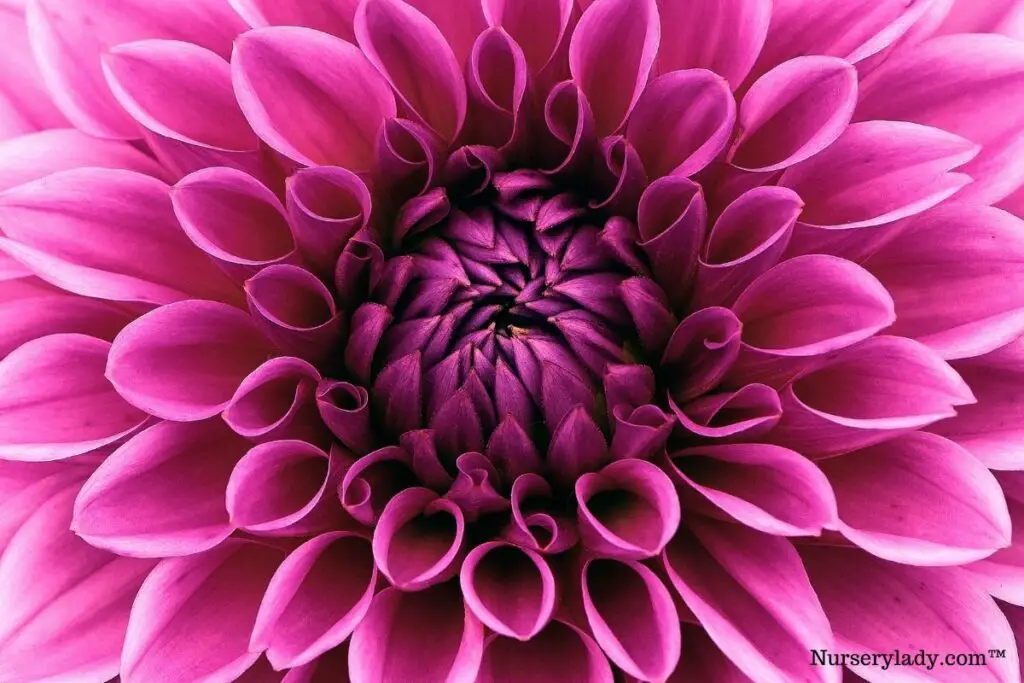
Dahlias flower in various forms, patterns, colors, and sizes blooming from midsummer till the first frost. They look beautiful in pots, hanging baskets, pathways, etc. They are easy growing and low maintenance.
Light: Dahlias need full sun for at least 6 hours a day to bloom best. In hot summer, give them some shade to protect the leaves from burning.
Watering: Water dahlias only when the tubers have sprouted and established roots. Water them thoroughly once a week. Water to keep the soil consistently moist and never drowning.
Fertilizer: Dahlias like fertilizer, and they will grow bigger and bloom better with fertilizing. Use high phosphorus food for abundance blooms like 10-30-20.
General care: Dahlias need to be dug and stored to pass the winter. They prefer warm temperatures and suffer from frost.
Coleus
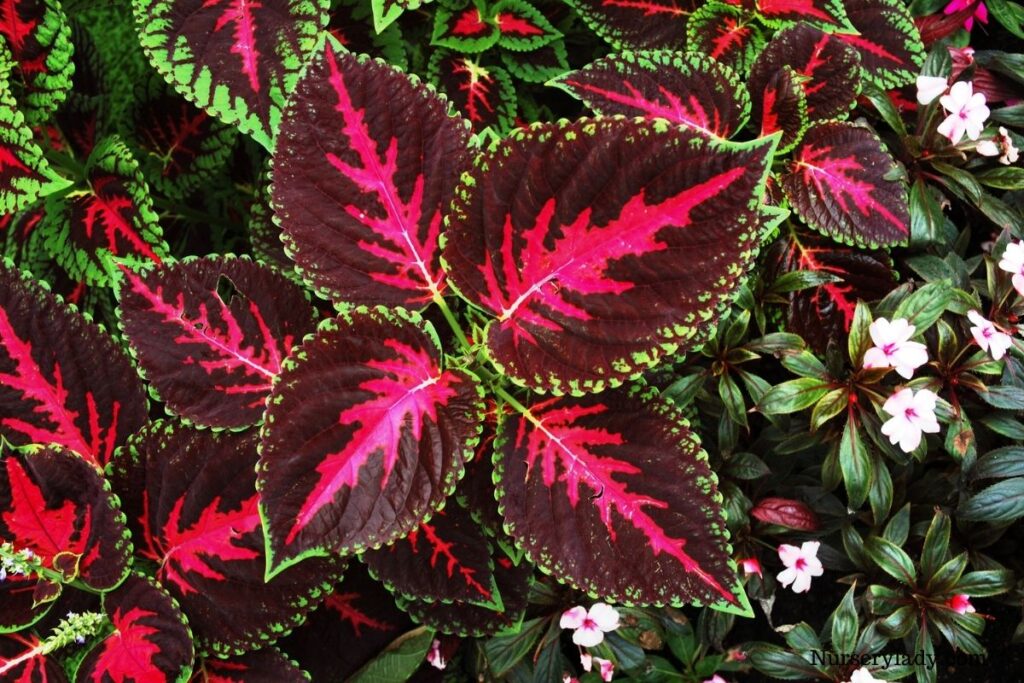
Coleus produces small blooms in white, blue. The leaves are the main attraction coming in different sizes, forms, shapes, and colors. They look beautiful growing in containers, window boxes, hanging pots, etc.
Light: Coleus grows well in part shade to full shade. Good lighting improves leaves’ color for some of its variety. Give them protection from the harsh afternoon sun in summer.
Watering: Water coleus regularly to keep the soil moist but not soggy. Keeping them drowning will lead to root rot, and long dry spells will slow their growth. Water them according to the soil’s needs, which changes with cultural conditions.
Fertilizer: Coleus growing in rich soil doesn’t need feeding. If the soil is poor, feed them monthly in the growing season with a balanced fertilizer diluted to half strength.
General care: Coleus prefers a hot and humid environment. They cannot tolerate frost and can even die. Keep them away from vents, hot winds, cold winds. Keep them at a temperature level around 70°F or above.
Flowering tobacco
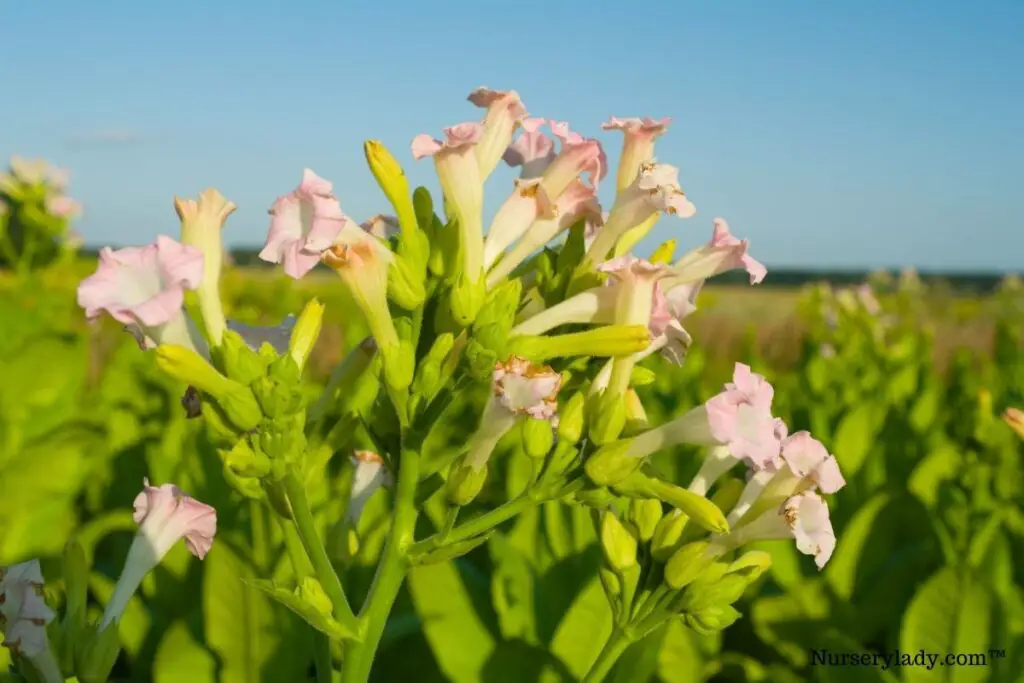
Flowering tobacco adds beauty and fragrance to your garden. They produce clusters of flowers and green foliage, and they bloom from spring till fall. They can grow up to 5 feet high and 3 feet wide.
Light: Flowering tobacco appreciates full sun location and can grow in partial shade too. They need 6 hours of light at least in a day, full sun is best.
Watering: Flowering tobacco appreciates frequent watering, especially when young. Mature ones can withstand a short period of drought. Check the top few inches of the soil by digging a finger and water if it feels dry.
Fertilizer: Feed flowering tobacco with a balanced fertilizer after planting to help it grow and develop. Feed monthly throughout the growing season with a balanced fertilizer.
General care: Flowering tobacco prefers moderate temperatures and can survive in all humidity levels. They are heat-tolerant but suffer in cold weather. Add mulch before winter to protect them.
Fuchsia
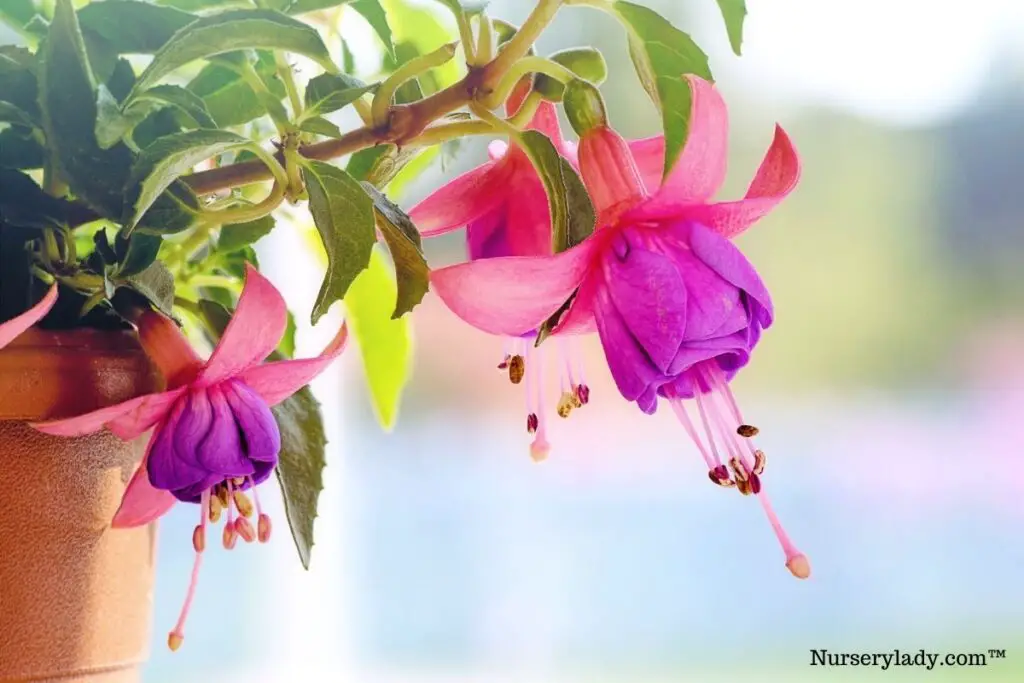
Fuchsia produces teardrop-shaped blooms from spring to fall. They look stunning in baskets, hanging pots with their droopy blooms. They have a moderate growth speed adding 1-2 feet each year.
Light: Fuchsias thrive in shady locations. Unlike many plants, they can grow an abundance of blooms from shade to deep shade. They enjoy bright indirect light but avoid direct light.
Watering: Fuchsias likes to be watered in regular intervals to stay moist. They do not appreciate overwatering and can suffer from root rot if kept soggy for a long period.
Fertilizer: Fuchsias are heavy feeders and appreciate feeding in the growing season. Feed them monthly or twice a month with a balanced fertilizer or can use fish emulsion combined with seaweed.
General care: Fuchsias prefers temperature levels ranging between 55°F and 80°F. They like humid conditions and suffer in dry areas. Use a humidifier or mist regularly to maintain high humidity.
Coreopsis
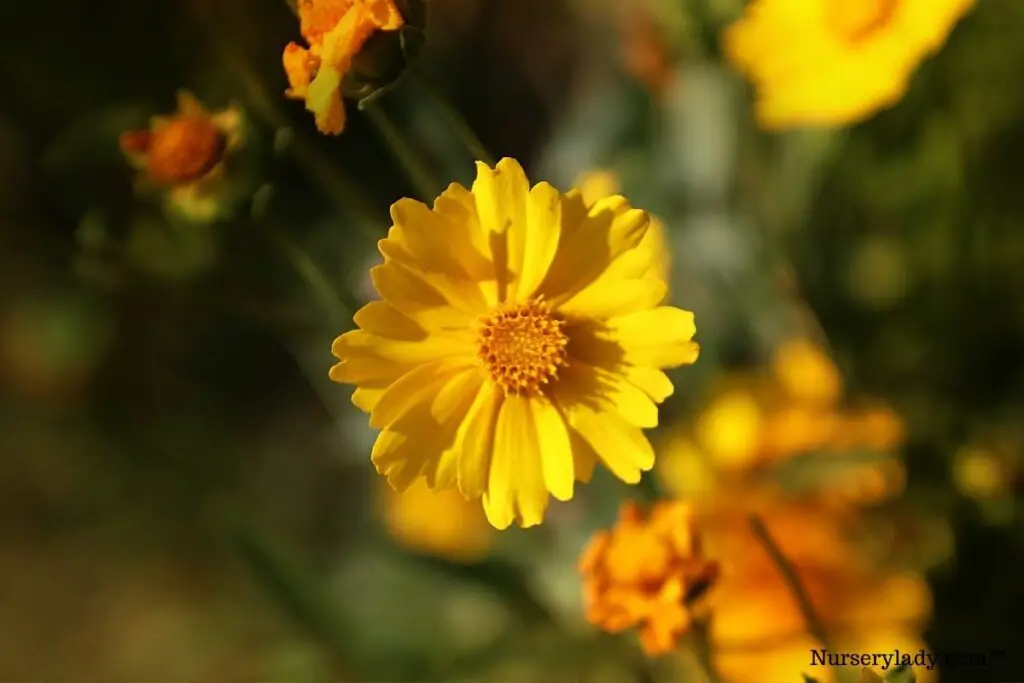
Coreopsis produces daisy-like, bright blooms in different colors and green leaves. They are flexible, hardy, and can be grown from containers, hanging pots to pathways. They bloom throughout summer, also attracting bees, butterflies around their blooms.
Light: Coreopsis grows well in sunny locations. A spot with 6-8 hours of direct light is best for their growth and blooming. In low light, they will grow, but blooms will be less.
Watering: Coreopsis grows well in moist soil and should not stay in standing water. Let the soil halfway dry before watering them.
Fertilizer: Coreopsis are light feeders and can thrive without feeding or growing in rich soil. Mixing compost at the beginning of the spring is enough to boost their growth, and too much feeding will reduce blooming.
General care: Coreopsis thrives in temperature between 70°F and 80°F. They can thrive in high humidity, provided they have good ventilation and proper drainage.
Hydrangeas
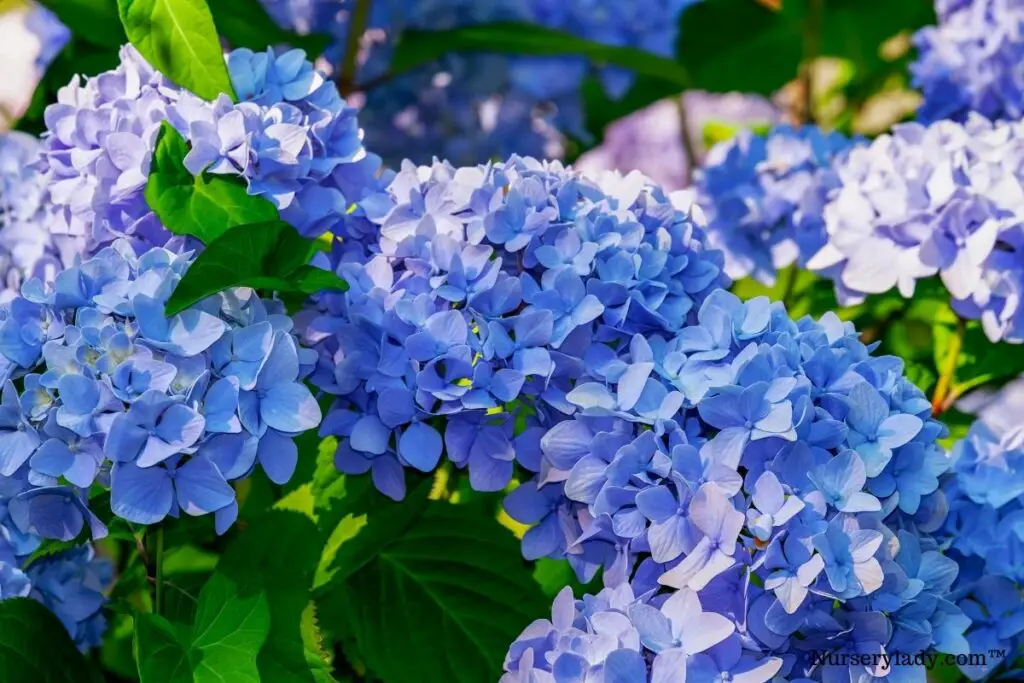
Hydrangeas produce beautiful circular flower heads, which may differ from variety to variety. They grow rapidly and are adaptable to different conditions. They add color to your garden from mid-summer through fall.
Light: Hydrangeas prefer bright light and can survive in the shade too. Though too much shade can affect their flowering. In hot weather, partial shade from the afternoon sun is appreciated.
Watering: Hydrangeas like to stay consistently moist. Water them deeply to allow water to reach the roots and ensure excess water is draining out. They need water more frequently in hot weather but should not be over-watered.
Fertilizer: Hydrangeas need little feeding, mainly if the soil is poor. Plants growing in rich soil need less or no feeding at all. Too much feeding will increase foliage growth at the expense of blooms. Simply mix compost into the soil in the spring to replenish the soil.
General care: Hydrangeas prefer mild temperatures. Exposing them to freezing temperatures can be a problem for their life. They thrive in average to high humidity.
African daisies
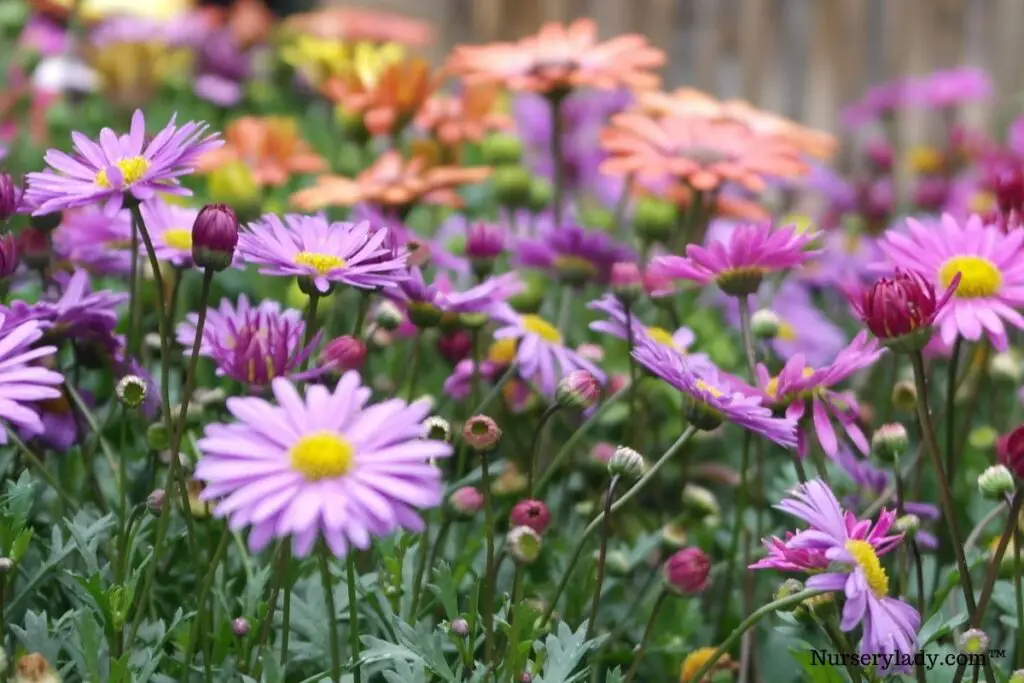
African daisies resemble daisies but come in vivid colors. They grow rapidly, blooming from spring till fall. They look stunning when combined with other plants.
Light: African daisies thrive in full sun and can grow in partial shade too. Low light will inhibit flowering and good lighting will improve flowering.
Watering: African daisies like frequent watering, especially when young. After they are established, they can bear a short period of drought. However, long periods of drought and intense heat can reduce their growth.
Fertilizer: Feed African daisies with balanced fertilizer by adulterating it to half the strength. Feed monthly throughout the growing period. You can also add compost apart from fertilizing to replenish their soil mix.
General care: African daisies like mild temperatures. Low temperature below 40°F is fine for them, but frost will damage them. Good air circulation along with proper drainage is crucial for their health.
Sea holly
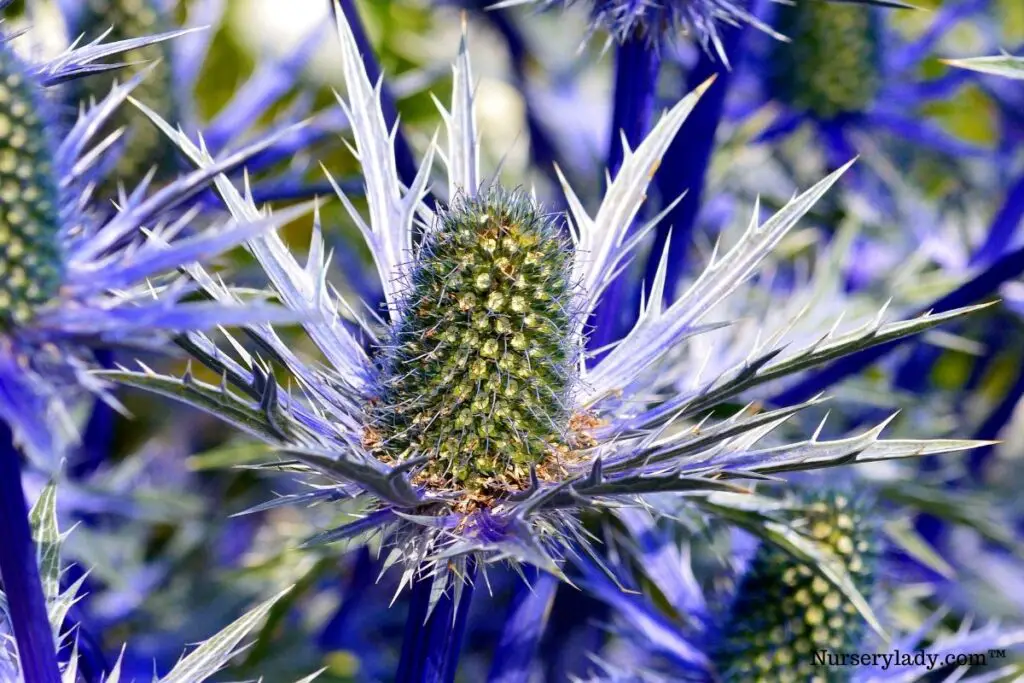
Sea holly produces beautiful purple-blue blooms and is low maintenance. They grow rapidly and look great in containers, window boxes, hanging pots, borderlines, etc. They can grow up to 3 feet tall and 2 feet wide.
Light: Sea holly thrives when it receives 6-8 hours of full sun. In low light, they will become weak, and stems may need stakes to stay upright. Proper lighting is essential for better growth and blooms.
Watering: Sea holly is extremely drought tolerant and needs watering till established. They need water only when living in dry areas without water for too long. Also, check the drainage system to allow excess water to drain out easily.
Fertilizer: Sea holly is light feeders but keep their soil organically rich for better growth. You can add compost in mid-season to replenish soil nutrients.
General care: Sea holly appreciates the cool temperature of spring and fall. They may suffer and need some protection in hotter months, and deadheading will help them bloom longer.
Reference: The University of Minnesota, Kansas State University, BBC Wildlife Magazine, Arizona-Sonora Desert Museum.
